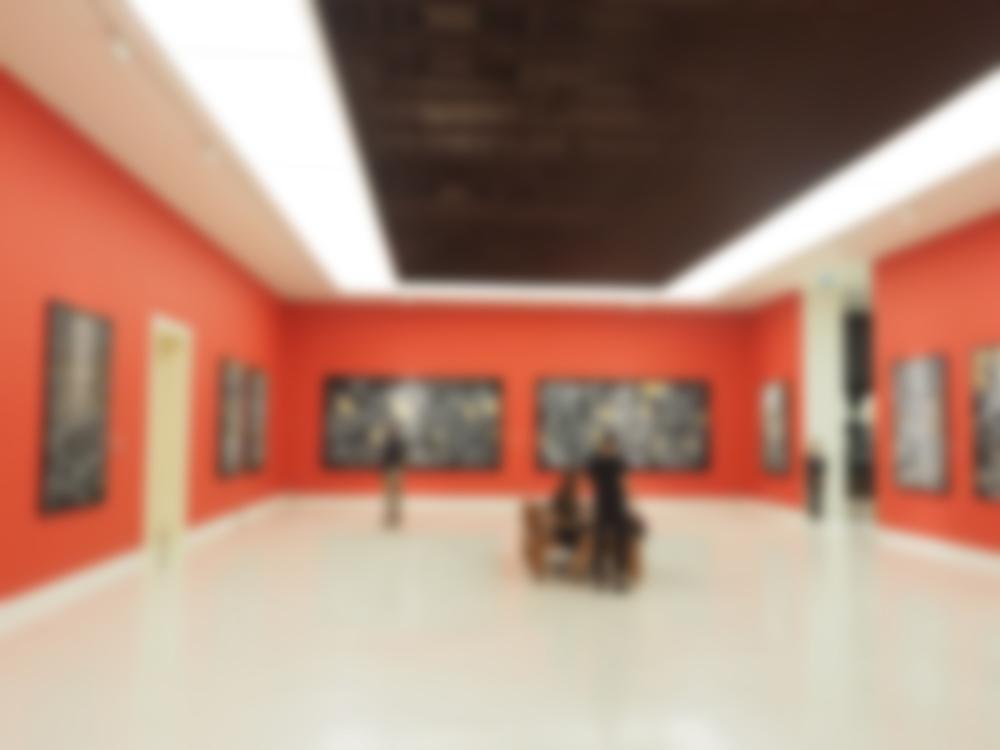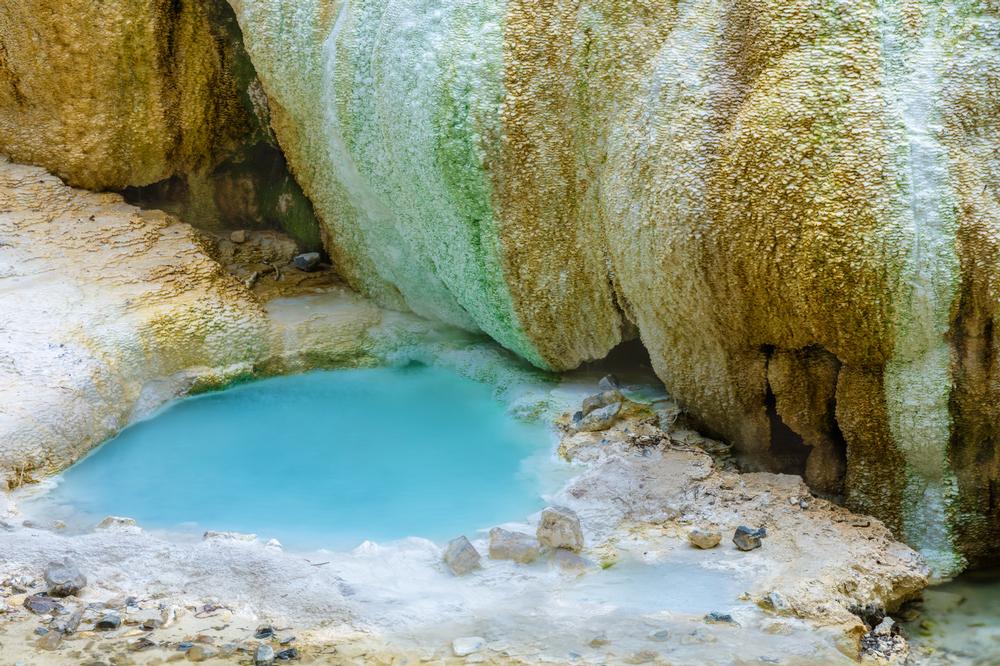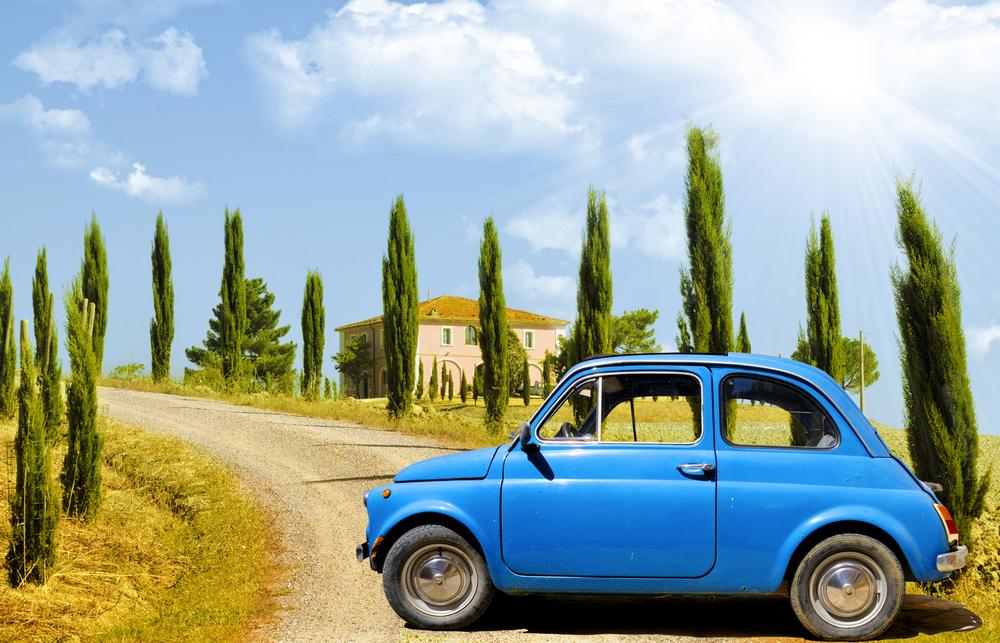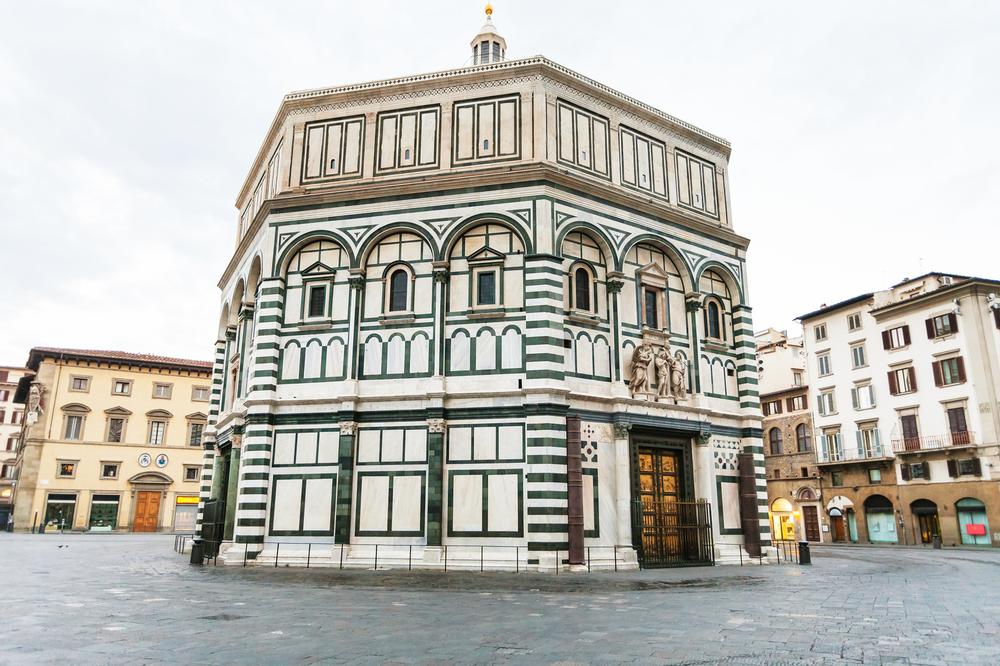In This Article
Dreaming of rolling hills, Renaissance cities, and world-class wine? Head to Tuscany! Located in central Italy, Tuscany is a timeless region filled with historic towns, golden countryside, artistic treasures, and culinary excellence. Whether you’re sipping Chianti, admiring Michelangelo’s David, or relaxing in a villa, Tuscany offers a rich blend of culture and countryside.
Tuscany, Italy Highlights:
- For Art Lovers: Explore Florence’s Uffizi Gallery – See masterpieces by Botticelli, da Vinci, and Michelangelo in the heart of the Renaissance.
- For Wine Enthusiasts: Tour Chianti vineyards – Visit picturesque wineries, taste regional reds, and enjoy views of cypress-lined roads.
- For Photographers: Stroll through the Val d'Orcia – Capture rolling hills, medieval towns, and postcard-perfect Tuscan landscapes.
- For History Buffs: Walk the streets of Siena – Discover Gothic architecture, the Palio horse race, and a stunning cathedral.
- For Couples: Soak in Saturnia’s hot springs – Bathe in natural thermal pools surrounded by beautiful Tuscan scenery.
When I like to visit Tuscany, Italy
The best time to visit Tuscany is in the spring (April–June) and fall (September–October). These months offer mild weather, blooming landscapes, and harvest festivals. Summer (July–August) is hot and busier, while winter is quieter and great for city-focused trips.
Tips for getting to Tuscany, Italy
- By Air: Fly into Florence Airport (FLR) or Pisa International Airport (PSA). Rome and Milan are also options with train connections.
- By Train: Italy’s Trenitalia and Italo trains connect major cities like Florence, Siena, Pisa, and Lucca.
- By Car: Renting a car is ideal for exploring rural Tuscany, especially regions like Chianti and Val d'Orcia.
Where I like to stay in Tuscany, Italy
- Recommended for Families: Agriturismo Poggio Alloro (San Gimignano) – A farm stay with vineyard views, a pool, and kid-friendly activities.
- For Couples: Villa Bordoni (Greve in Chianti) – Romantic boutique hotel with fine dining and vineyard surroundings.
- For City Travelers: Hotel L’Orologio (Florence) – Elegant hotel steps from Florence’s train station and main attractions.
Best Things to Do in Tuscany, Italy
1. Explore Medieval Masterpieces at The Bargello

© Courtesy of R.Babakin - Fotolia.com
The Bargello, which is also known as the Palazzo del Bargello or the Palace of the People, is a former Florentine prison and barracks that has been converted into an art museum.
The complex's name is believed to have been derived from the Latin word bargillus, which means "fortified tower" or "castle." It was originally constructed in 1255 and is Florence's oldest public building, originally built to house the city's podestà, or city council magistrate. In 1574, it began to be used as a prison and remained the Florentine police headquarters until the mid-19th century, when it was converted into a national museum by the Governor of Tuscany.
Today, it houses the largest collection of Renaissance and Gothic sculptures in Italy, including significant pieces by Michelangelo, Donatello, and Bernini. Significant collections of ceramics, tapestries, textiles, and metalworks are also showcased.
Via del Proconsolo, 4-50122 Firenze, Phone +39-05-50-64-94-40
2. Wander Through Renaissance Beauty at the Boboli Gardens

© Courtesy of Dmitry Naumov - Fotolia.com
Boboli Gardens are a Florentine park that was originally constructed in the mid-16th century adjacent to the Pitti Palace.
The gardens were landscaped for Eleonora di Toledo, wife of Italian ruler Cosimo I de' Medici, and were constructed by architects Niccolò Tribolo and Bartolomeo Ammanati, with additional input by Giorgio Vasari and Bernardo Buontalenti.
They are among the oldest and most prominent 16th-century gardens in the country, serving as a model for similarly-styled gardens throughout Europe.
Today, they are operated as a public park showcasing a significant collection of sculptures from the 16th, 17th, and 18th centuries, offering expansive views of the city, with water elements developed through irrigation sourced from the nearby Arno River.
Piazza Pitti, 1, 50125 Firenze FI, Italy
3. Marvel at the Grandeur of Florence Cathedral

© Courtesy of Spectral-Design - Fotolia.com
Florence Cathedral, also known as the Cattedrale di Santa Maria del Fiore, is Florence's official cathedral, originally designed in 1296 by Arnolfo di Cambio and extensively renovated in the 19th century with a Gothic Revival-style facade by Emilio de Fabris.
The cathedral, along with the nearby Florence Baptistery and Giotto's Campanile, is listed as a UNESCO World Heritage Site preserving the city's historic city centre. The cathedral serves as the mother church for the Roman Catholic Archdiocese of Florence, currently overseen by archbishop Giuseppe Betori.
Notable features include a 15th-century brick dome constructed by Filippo Brunelleschi, which remains the largest brick dome in the world, and significant works of art by Paolo Uccello and Andrea del Castagno.
Piazza del Duomo, 50122 Firenze FI, Italy
4. Stand Before Michelangelo’s David at the Galleria dell'Accademia di Firenze

© Courtesy of Dayna - Fotolia.com
Galleria dell'Accademia di Firenze, known as the Gallery of the Academy of Florence in English, is Italy's second-most-visited art museum after the Uffizi, attraction more than 1.4 million annual visitors.
The museum was originally founded by Grand Duke of Tuscany Pietro Leopoldo in 1784 and is best known as the display site of the original sculpture of Michelangelo's David since 1873.
Though the museum was originally created as a display of Michelangelo works, it has become a general display museum of works by Florentine artists throughout the Trencento and Renaissance, including significant works by Sandro Botticelli, Domenico Ghirlandaio, Paolo Uccello, and Andrea del Sarto.
Via Ricasoli, 58/60, 50122 Firenze FI, Italy, Phone: +39-05-52-38-86-09
5. Discover Italian Creativity at the Gallery of Modern Art

© Courtesy of anon - Fotolia.com
Gallery of Modern Art is located on the second floor of the Pitti Palace in Florence, overlooking the palace's beautiful Boboli Gardens.
The museum has been open to the public since 1924, housing significant Italian works produced between the late 18th and early 20th centuries, from the rule of Pietro Leopoldo through the start of World War I.
It was begun with a collection of works produced from competitions by the Academy of Arts and Designs, housed within a space formerly occupied by the Lorraine family. Significant works include the works of the Macchiaioli, along with significant pieces by artists such De Chirico, De Pisis, Dupré, Morandi, and Boldini.
Piazza de' Pitti, 1, 50125 Firenze FI, Italy
6. Soak and Rejuvenate in the Hot Springs of Bagni San Filippo

© Courtesy of vvvita - Fotolia.com
The Hot Springs of Bagni San Filippo are one of Tuscany's premiere natural hot springs sites, used for healing and medicinal purposes since the Etruscan era.
The springs are considered to be a hidden local secret, less crowded than tourist-heavy hot springs such as the springs at Saturnia in Maremma.
They are located just outside the city of Bagni San Filippo within the Val d'Orcia and showcase a number of waterfalls, pools, and calciferous formations, including the spectacular White Whale calcified waterfall, which is located at the confluence of the hot springs and the cool waters of the nearby river.
A number of visitor pools are available for relaxation and healing purposes, which may be accessed for free year-round.
53023 Province of Siena, Italy
What to do if you are traveling with kids:
7. Escape to Island Bliss on the Isla de Elba

© Courtesy of MarcoBagnoli Elflaco - Fotolia.com
Isla de Elba is the largest island within the Tuscan Archipelago, known international as the exile site for French Emperor Napoleon during his 300-day exile in 1814 and 1815.
The island is Italy's third-largest island region after Sardinia and Sicily and is part of the expansive National Park of the Tuscan Archipelago, Europe's largest marine park. The island's connection to Napoleon is explored at Portoferraio’s National Museum of Napoleonic Residences, while its Napoleonic residences are preserved at Palazzina dei Mulini.
In recent decades, the island has become a prime wine tourist destination in Tuscany, known for its beautiful beaches and summertime resort residences. A network of road racing trails span the island, including a noted stretch between Rio nell’Elba and Porto Azzurro linked to famed 20th-century racer Fausto Coppi.
Activities and Attractions for Couples and Singles:
8. Feel the Rush with a Ferrari Test Drive Experience

© Courtesy of jpholmi - Fotolia.com
Ferrari Test Drive allows Florentine visitors to take the wheel for a once-in-a-lifetime Ferrari driving experience, assisted by personal driving tutors.
All tours depart from the Piazzale Michelangelo and explore the Tuscan countryside, offering sweeping views of the region's surrounding natural wonders.
Tours are available in varying distance increments, ranging from four to 70 kilometers of driving time. Participants may upgrade their tours with stops at the hillside city of Fiesole, which showcases spectacular panoramic views of Florence.
Apertifs are offered as part of tour stops in Fiesole, along with Chianti country drives through Tuscany's famed vineyard regions. Preferred driving times may be scheduled in advance, though visitors should note that there may be a slight waiting period upon arrival for drives.
Piazzale Michelangelo, 50125 Firenze FI, Italy, Phone: +39-33-12-05-58-88
9. Cruise Tuscany’s Backroads on a Fiat 500 Tour

© Courtesy of katy_89 - Fotolia.com
Fiat 500 Tours allow participants to tour the beautiful Tuscan countryside in luxurious Fiat 500 vehicles driven by experienced tour guides.
Tours are available for individuals, couples, and small groups, departing each morning from Castellina in Chianti. From there, tours explore Chianti's iconic landscape, showcasing local monuments and attractions. Tours follow the path of Via Francigena, showcasing ancient hills and trees along beautiful country roads.
All tours include visits to local wineries, with three wine tastings offered, showcasing the region's top wines, before meeting at a local farmhouse for a traditional Tuscan lunch. The tour lasts approximately six hours and is available in Italian, English, French, and Spanish.
Via Gherardo Silvani, 50125, Florence, Italy, Phone: +39-0-57-71-48-10-01
10. If You Love Intricate Architecture, Don’t Miss the Florence Baptistery

© Courtesy of vvoe - Fotolia.com
Florence Baptistery, also referred to as the Baptistery of St. John, is a basilica in Florence that is located in the Piazzas del Duomo and San Giovanni, near the Campanile di Giotto and the Florence Cathedral.
As one of Florence's oldest civic buildings, the basilica was constructed in the Florentine Romanesque style, completed in 1128. Its construction was influential in the development of Renaissance architectural styles utilized by architects such as Leon Battista Alberti, Francesco Talenti, and Filippo Brunelleschi and is internationally renowned for its three sets of artistic bronze doors crafted by Andrea Pisano and Lorenzo Ghiberti.
Until the 19th century, it served as the baptismal site for all Florentine citizens, including notable figures such as poet Dante Alighieri. Today, it still performance baptisms on the first Sunday of every month by appointment.
Piazza San Giovanni, 50122 Firenze FI, Italy
Where I Like to Eat in Tuscany, Italy
- Recommended for Families: Trattoria Mario (Florence) – Classic Florentine dishes in a cozy, casual setting beloved by locals.
- For Fine Dining: Osteria Francescana (Modena – nearby) – World-renowned, Michelin-starred cuisine blending tradition and innovation.
- For Local Flavor: La Porta (Monticchiello) – Stunning views and Tuscan specialties in a romantic, hilltop setting.
My favorite local events:
- For Tradition Lovers: Palio di Siena (July & August) – Watch an intense medieval horse race in Siena’s historic square.
- For Wine Fans: Chianti Classico Wine Festival (Greve in Chianti) (September) – Sample wines, enjoy local food, and meet producers.
- For Art & History: Florence’s Scoppio del Carro (Easter Sunday) – A traditional fireworks-filled celebration in front of the Duomo.
Day Trip Itineraries Within 30–90 Minutes of Florence:
- For Wine Tasting: Chianti Region (30–60 min) – Visit Greve, Radda, and Castellina for cellar tours and vineyard picnics.
- For Seaside Views: Livorno (90 min) – Stroll the waterfront, eat seafood, or catch a ferry to nearby islands.
- For Medieval Beauty: San Gimignano (1 hr) – Famous for its towers and saffron gelato.
- For Spa Lovers: Montecatini Terme (1 hr) – Enjoy wellness treatments in ornate, historic bathhouses.
- For Art and Walls: Lucca (90 min) – Bike the city walls, visit ancient churches, and shop local crafts.
Plan Your Trip












